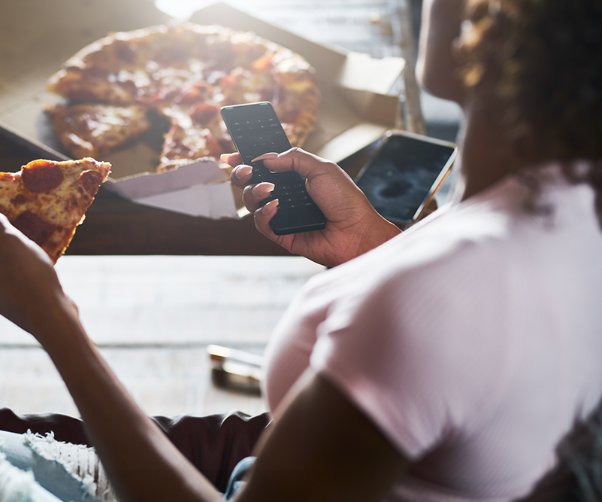
Social distancing: What it means for the coronavirus and why it is important
The novel coronavirus (COVID-19) caused swift changes to be made both within our community and around the country. Much of the conversation centered — and still does — around the phrase “social distancing.”
Social distancing, as defined by the CDC, means keeping space between yourself and other people outside your home. This includes remaining out of congregate settings, avoiding mass gatherings and maintaining distance (approximately 6 feet or 2 meters) from others when possible.
You might also hear social distancing referred to as "physical distancing."
Read more about social distancing from the CDC.
Since the virus mainly spreads from person-to-person — between people who are within close contact of one another or through ‘respiratory droplets’ when an infected person sneezes or coughs — the idea is we can slow down the spread of the coronavirus by practicing social distancing.
By self-isolating or social distancing when we do go out in public, we can hope to limit the number of cases, and in turn lessen the number of people who require medical attention so that healthcare systems are not overwhelmed.
Read more about how COVID-19 spreads in our Coronavirus Resource Center.
Looking for guidance on social distancing? Check out these stories from Your Health:
Hand sanitizer tips: Expiration dates, keeping it in your car, usage for children and more
Are you wearing a protective face mask the correct way? Here’s how to make sure
SUBSCRIBE TO OUR BLOG
and you'll receive more health & wellness tips right in your inbox.
SUBSCRIBE NOWLocal COVID-19 Resources
City of Memphis COVID-19 updates: Testing sites, safer at home orders and more
The City of Memphis put out its own social distancing guidelines for those who aren’t able to work from home, and local officials have continued to stress social distancing.
It’s still safer at home. Protect yourself and your family by:
— City of Memphis (@CityOfMemphis) May 13, 2020
▪️Going out only when necessary and wearing a face covering
▪️Washing your hands
▪️Cleaning surfaces regularly
▪️Staying home if you are sick pic.twitter.com/Ovxwb0Cm7a
The Tennessee Department of Health created a helpful infographic about the concept.
Protect yourself. Protect your loved ones. Protect your entire community. Practice good social distancing. #COVID19 #SocialDistance pic.twitter.com/fhrDhKa1io
— TN Dept. of Health (@TNDeptofHealth) March 19, 2020
More from Your Health: Steps You Can Take to Avoid and Prevent Spread of the Coronavirus
One of the most common questions right now is “how long will it last?” The simple answer is “it depends.”
The Washington Post outlined many of the factors that will be used to determine this answer. One of those factors is when cases in the United States reach their peak. But again, the answer isn’t crystal clear because for China it took about two months for cases to peak, while in South Korea it took around half a month.
It also depends on some characteristics we currently don’t know about COVID-19. Researchers are working around-the-clock to learn more about the virus and develop a vaccine, and things are likely to evolve the more we learn.
COVID-19 Content from Your Health:
Coronavirus Resource Center: Changes at MLH facilities, FAQs about COVID-19 and more
Is it safe to seek treatment at hospitals? Yes, and here's why
Answering your questions about how we're safely resuming elective procedures
“Flattening the curve” is another term you might be hearing. It refers to using protective practices, like social distancing, to slow the spread of infection.
Without protective measures, the number of cases can spike, meaning hospitals and care facilities become overwhelmed and cause shortages of beds, equipment and medical staff.
But by taking precautionary measures, the number of patients needing care may arrive at a slower rate, meaning hospitals are better able to keep up with the need for beds, supplies and medical staff.
While it may be rough to distance yourself from others and put a cap on your social life for now, these measures are needed to ensure we are doing our best to limit the spread of COVID-19 and provide effective care for those in need.
Related Articles


